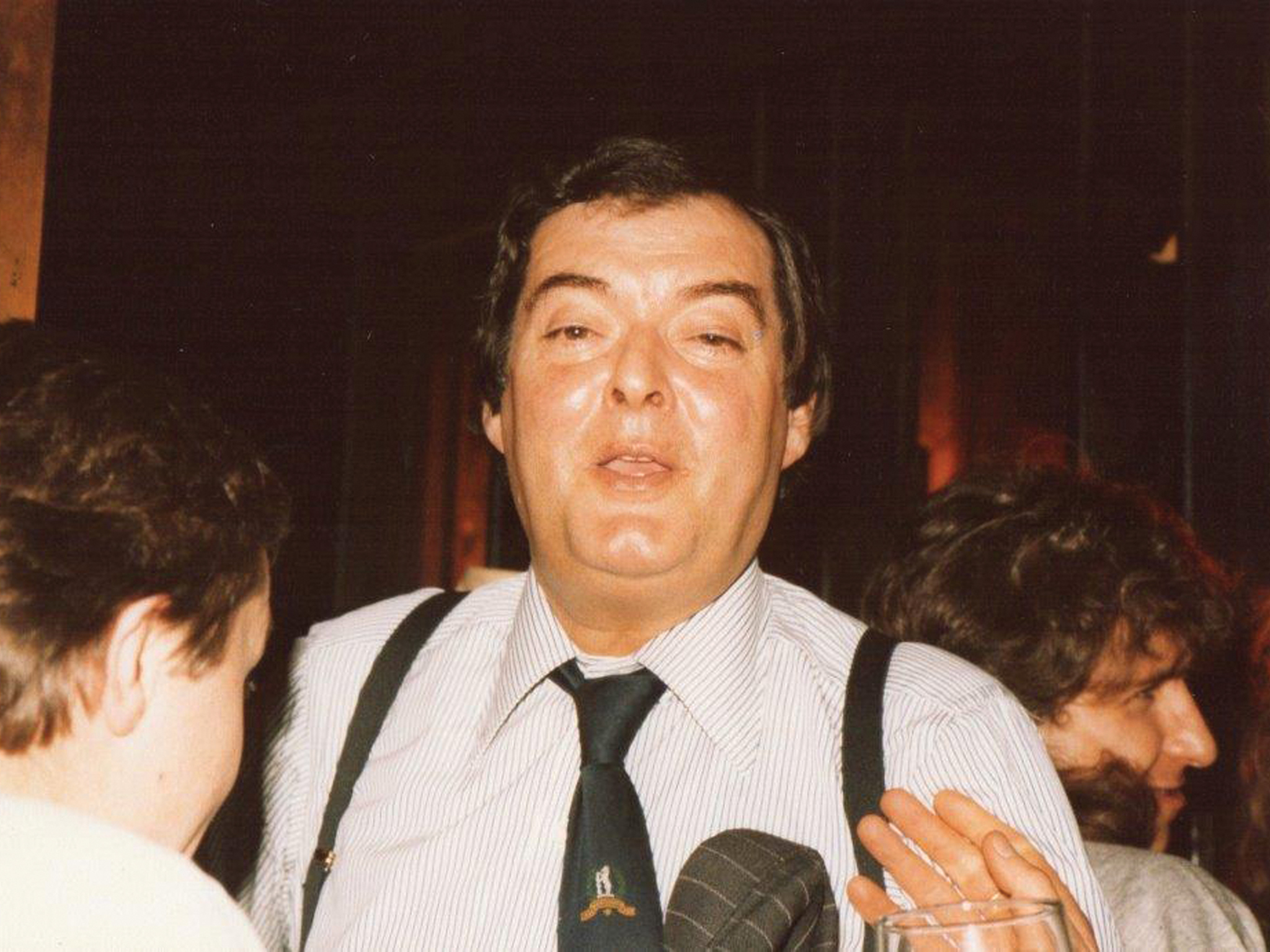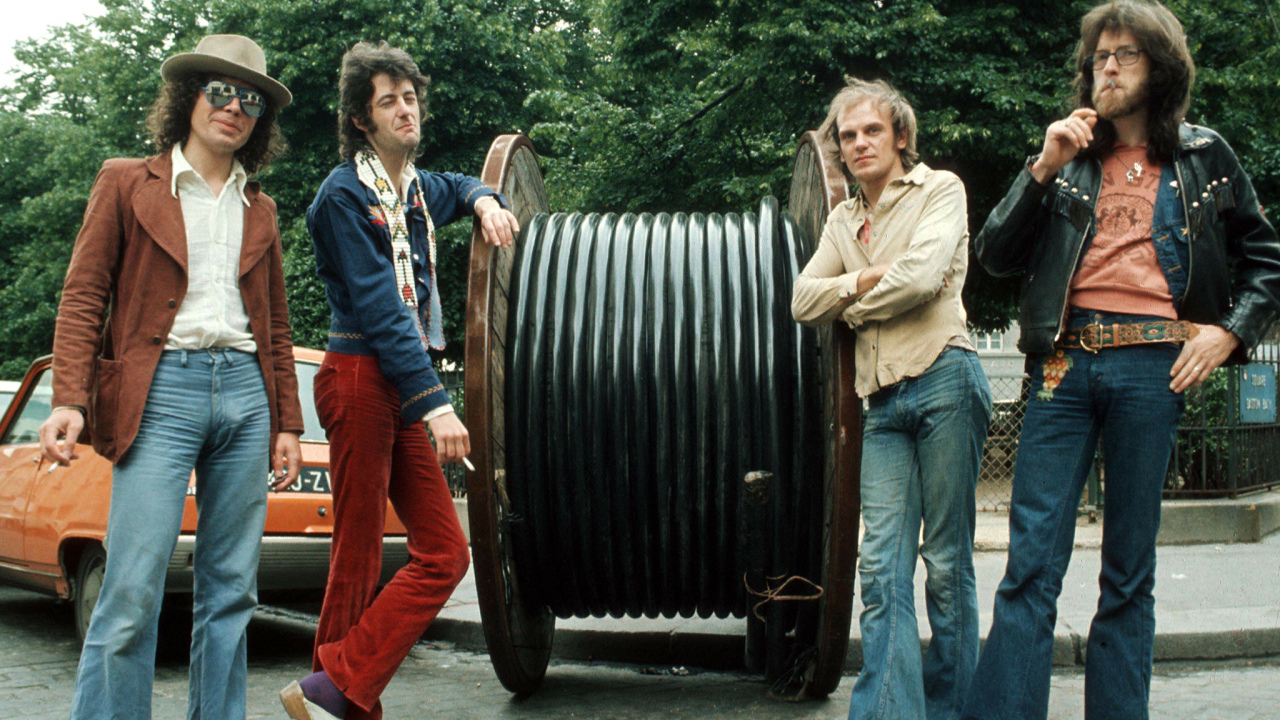To the untrained eye, Charisma Records is not that dissimilar to many other labels of the era.
Compelling founder? Check. Unique logo? Check. Singular ethos? Check. One artist that would go on to outsell the others? Check. But what made Charisma unique was that its founder, Tony Stratton-Smith, did not solely have a counterculture background. Although at the time of the label’s formation he was managing The Nice and Bonzo Dog Doo Dah Band, he was also a polymath with a journalistic past and interests right across the board.
“I don’t think he knew about rock’n’roll, but he knew an awful lot about emotion. Intelligence was a key thing with Strat,” Charisma booking agent Paul Conroy says, and this was hugely instrumental in giving Charisma such a distinctive flavour among the independent labels of the early 70s.
HOW IT BEGAN:
Charisma Records was formed in October 1969 with an advance from Sam Gopthal (the founder of Trojan Records) at Beat & Commercial (B&C) Records, who were initially to distribute Charisma’s releases. Located in London’s Soho, the label was set up by Stratton-Smith, and based on Berry Gordy’s model for Motown Records, where he could sign like-minded artists who would work for the common good.
In his initial press statement about the label, Stratton-Smith concluded: “The only central truth of the record business is that there is no substitute for talent. We intend never to forget that.”
The first release on Charisma (in late 1969) was Rare Bird’s self-titled debut, which included the single Sympathy: “Which went on to be a million-seller in France – never to be repeated!” former MD Gail Colson laughs.
All of the groups on Charisma’s roster had to be liked personally by Stratton-Smith. As a result, it was to develop into a widely eclectic, occasionally highly commercial label. More often than not, it was full of singular artists who had a complete vision of their work, most notably Stratton-Smith’s personal favourite, Van der Graaf Generator. Led by the mercurial Peter Hammill, they would prove one of Charisma’s most long-standing artists.
Stratton-Smith was encouraging and sympathetic. Stories about ‘Strat’, as he was affectionately known, are legion. A fervent and passionate supporter of horse racing, he operated out of the Ship pub and La Chasse, just down from the Marquee on Wardour Street.
Born in Birmingham in 1933, he had been a sports journalist and while working for the Daily Sketch, became the youngest sports editor on Fleet Street. He had also written a book, The Rebel Nun, about Mother Maria Skobtsova, who had been killed at Ravensbruck for her role in the French Resistance in the Second World War.
A meeting with Brazilian composer Antonio Carlos Jobim while Stratton-Smith was covering the ’62 World Cup in Chile led to an interest in music publishing, which by the later 60s led to him becoming a band manager.
Stratton-Smith built a stable of acts who straddled the underground and mainstream – The Nice, The Creation, The Koobas and Bonzo Dog Doo Dah Band were all on his roster. He worked with Gail Colson, who he had met while managing The Creation. Colson had been producer Shel Talmy’s PA and was instrumental in getting Talmy to offer a room to Stratton-Smith to establish his fledgling label. She became Stratton-Smith’s PA and was to become the label manager and eventually MD of Charisma.
“They all seemed the same job to me, with just a few more headaches,” Colson says today.
“Charisma came out of many drink-filled evenings over various dinners at La Chasse,” Colson continues. “Tony and I were very frustrated by the way The Nice and the Bonzo Dog Doo Dah Band were being treated by their respective record companies, Immediate and United Artists. When I had worked for Shel Talmy, he had started Planet Records, one of the first independent record companies in the UK, so I had a bit of experience of how a label worked and we just went for it.”
Run as a family affair (Colson’s brother Glen became the press officer, while her then-husband, Fred Munt, was later to run the management company), the Charisma team were all under 25 years old. Through Stratton-Smith’s many industry connections, gigs for the label were booked through the Terry King Agency, where he worked with Paul Conroy. Soon Conroy would join Charisma, running its own agency.
Writer Chris Charlesworth told me in Without Frontiers: The Life And Music Of Peter Gabriel: “Gail was supremely efficient – an absolute sweetheart, absolutely down-to-earth, businesslike. She hooked up with Strat and became his consigliere, as it were. She was the businesslike money person and made sure that what needed to be done was done. Strat would waft in and out. If it wasn’t for Gail, God knows what would have happened to the bloody company! She was fiercely determined and put her foot down. She was incredibly charming as well.”
Within a year, Charisma had signed an uncomfortable-looking bunch of public schoolboys, on the advice of Rare Bird’s producer John Anthony. Although they had a long way to go, like a lot of the artists Stratton-Smith signed, Genesis had something.
**THE GOLDEN PERIOD: **
The artistic and financial periods of success for Charisma were in some respects very different things, but the incredible energy of the first five years showed that the label could happily take on all comers. It was a way of life rather than just going to an office: “The label started work about 10.30 in the morning – for some of us! – and finished either in the Marquee bar or the Speakeasy at any time in the early morning,” Paul Conroy recalls. “More business and contacts were made out of office hours and because the business was so much smaller, we all saw the upcoming bands at the Marquee thanks to [manager] Jack Barrie. Creative decisions were made by Strat and we either concurred or had a go at him, depending on his choices of acts that he wanted to sign.”
Stratton-Smith’s vision and love of showmanship were ably demonstrated by the two ‘Six Bob’ tours, which ran the length and breadth of the country in January and April 1971. They featured Lindisfarne, Genesis and Van der Graaf Generator, alternating on the bill on a nightly basis.
“It was a great success,” Colson remembers, “and got all the bands playing to a lot more people than they would have done individually.”
“Lindisfarne topped the bill in Newcastle and the north, VdGG in Manchester and the midlands, and Genesis in the home counties and the south,” adds Paul Conroy, who MC’d the tour with Andy Dunkley.
The immensely affable pop-folk of Lindisfarne provided the label with its first major success in two Top 10 UK singles and a No.1 album in 1971/’72. Genesis’ popularity grew incrementally with each album, bankrolled initially by Lindisfarne’s commercial zenith.

WHAT HAPPENED NEXT:
By the end of the 70s, Genesis, who had survived the departure of Peter Gabriel (now a successful solo artist, also signed to Charisma), were becoming bigger and their albums were becoming more of an event. Stratton-Smith was less involved in the day-to-day work, and Gail Colson left the label to concentrate on her management career, looking after her two Peters, Gabriel and Hammill. The label dipped its toes in new wave with its ‘Pre’ imprint, offering releases by The Monochrome Set, Scars and Delta 5.
Steve Weltman was brought in to run the label in 1981. Weltman had worked for Charisma between 1969 and 1974 and knew the ethos and history well. A successful manager in his own right, he agreed to come back on the condition that he would make a record with Malcolm McLaren, with whom Weltman had struck up a relationship during his time at RCA. McLaren was initially aghast: “Charisma?” Weltman recalled in Craig Bromberg’s book The Wicked Ways Of Malcolm McLaren. “That’s the hippie label with that big fat bloke, Tony.”
However, Weltman told McLaren of the label’s overriding mantra: “It’s the commitment, the belief in good product.” As a result, the Trevor Horn-produced Duck Rock in 1983 was arguably the last great album released on the label, full of the maverick spirit that had coursed through the previous 12 years of the imprint.
In 1983, Stratton-Smith moved the distribution of the label from Phonogram to Richard Branson’s Virgin, and by 1986 Stratton-Smith sold the label lock, stock and barrel to Virgin. However, his belief in Genesis had truly paid off. In fact, the American chart of June 1986 demonstrated quite how successful they had been.
An amazing seven records out of the Billboard Hot 100 involved all five members of the classic 1971-1975 line-up. The group were at No.1 with Invisible Touch, and Peter Gabriel’s Sledgehammer was just about to enter the Top 10. Phil Collins was in the chart with his former No.1, Take Me Home, and also as the producer of Howard Jones’ No One Is To Blame. Mike Rutherford’s group Mike + The Mechanics had two records in the chart – Taken In and All I Need Is A Miracle – while even Steve Hackett, in his GTR project with Yes guitarist Steve Howe, was in the Top 30 with the hit When The Heart Rules The Mind.
It may have been put down as one of Stratton-Smith’s wilder wine-fuelled fantasies if he had suggested this US chart supremacy to them when the group were shuffling around Charisma’s offices in Soho waiting for their cheques 15 years previously.
Sadly, Stratton-Smith died of pancreatic cancer in April 1987 at the age of 54. Peter Gabriel contributed to his obituary in The Daily Telegraph, saying: “His favourite occupations he listed as writing, talking and drinking and, in each, he could compete with the best. Strat earned himself a unique place in the worlds of entertainment and sport, a big man with a big heart. I will miss him.”
Paul Conroy adds: “Strat was a beacon, a gentlemen in the cut-and-thrust world that was showbiz at that time.”
TODAY:
Long defunct, the Charisma label is now part of Virgin EMI at Universal Music. Although not releasing anything new at present, its catalogue is being looked after with releases on the Virgin imprint. A complete box set of everything ever recorded by Monty Python and the R-Kive collection by Genesis were both released in 2014.
WHY WE SHOULD CARE:
Charisma captured the very essence of British eccentricity. A label with the pastoral strangeness of early Genesis, the folk-pop of Lindisfarne and the jazz-rock of Van der Graaf Generator alone would be enough to guarantee its status, but to add in Rare Bird, Monty Python, Sir John Betjeman and myriad others underlines its importance to the counterculture of the United Kingdom in the 1970s.
“Charisma was an amazing label,” Paul Conroy says. “It was Strat’s vision and eclectic taste in artists, run by a bunch of talented people who all went on to do many other things. Strat was a very English eccentric – a one-off who gave people time and room to grow and make their mistakes. My fondest memory is of him coming into my office one lunchtime and taking me to lunch at The Gay Hussar with Sir John Betjeman!”
EXPAND YOUR MIND WITH THESE CHARISMA GEMS:
**Refugees: An Anthology Of The Famous Charisma Label 1969-1978 **
**(Charisma/Virgin 2009) **
Compiled by Mark Powell, this three-CD overview of Charisma’s roster updates the tradition of the label’s much-loved samplers: 1973’s Charisma Disturbance (complete with its intricate Hipgnosis-designed packaging) and the following year’s One More Chance.
Darkness (11⁄11)
Van der Graaf Generator
(from The Least We Can Do Is Wave To Each Other, 1970)
“A song of numbers: although I am no numerologist, the circumstances of writing this highly instinctual song dictated its form and direction,” Peter Hammill wrote in his book Killers, Angels, Refugees in 1974. Composed on the night of November 11, 1968 – “Remembrance Day, by chance” – the song about fate was the first that VdGG played at their concert at Shepherd’s Bush Empire after a minute’s silence on July 8, 2005, the night after the London Tube bombings.
Lady Eleanor
Lindisfarne
(from Nicely Out Of Tune, 1971)
Lady Eleanor was written by the group’s Alan Hull and inspired by Edgar Allan Poe’s Tales Of Mystery And Imagination. Originally released in 1971, it became a hit the following year in the wake of the group’s success with Fog On The Tyne.
Supper’s Ready
Genesis
(from Foxtrot, 1972)
Unavoidable then, as now, this was the first payback for the faith shown in the group by Strat. Taking up virtually all of the second side of Foxtrot, the seven-section song remains the definitive statement of Gabriel-era Genesis.
Nadir’s Big Chance
Peter Hammill
(from Nadir’s Big Chance, 1975)
Peter Hammill is arguably the one true artist to emerge out of the whole Charisma stable, a man for whom the demands of the market have frequently meant nothing. Sensing change in the air, he made this dirty concept album about Rikki Nadir, a swipe at the Stardusts, Glitters and Alloys littering pop at the time.
Steppenwolf
**Hawkwind **
(from Astounding Sounds, Amazing Music, 1976)
After leaving United Artists, where the group had established themselves as the UK’s leading space-rock ensemble, vocalist Robert Calvert rejoined for two of their most well-loved and progressive albums: Astounding Sounds, Amazing Music and Quark, Strangeness And Charm. The claustrophobic, new wave-heralding Steppenwolf remains one of their greatest moments.
Solsbury Hill
Peter Gabriel
(from Peter Gabriel, 1977)
People thought Peter Gabriel had lost the plot (or indeed his whole vegetable patch) when he left Genesis just at the point they were about to break big. For many, he was the group, and without each other, neither would enjoy any success. Hindsight fortunately shows a very different story. Gabriel’s manifesto for freedom, driven by Steve Hunter’s acoustic guitar, is forever beautiful.

